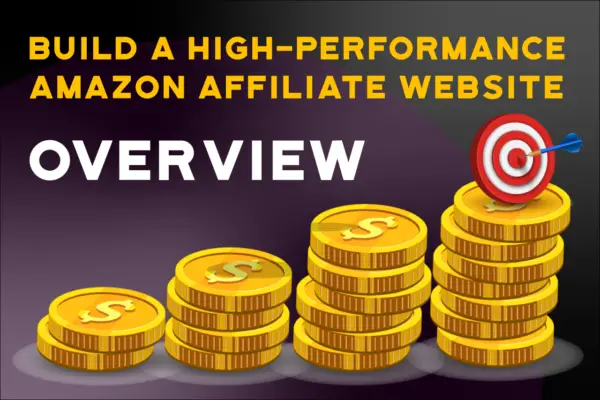[Step-by-Step Tutorial]
 What is a high-performance Amazon affiliate website?
What is a high-performance Amazon affiliate website?Lately, you may have heard a lot of talk about website performance, page speed, and core web vitals. This is all-important for a successful Amazon Affiliate website, but “performance” applies to a lot more than just how fast your page loads or what scores you get in a page speed tester.
In this tutorial, we will go step-by-step through everything you need to know and do to launch a high-performance website on ALL levels.
As you can see, all of these aspects of building a successful Amazon Affiliate website can be optimized to achieve their goals as well as possible.
This tutorial is divided into 5 chapters. Each one covers the basic steps you need to take to follow the tutorial. I link to official high-quality outside tutorials whenever I can because they will always be up-to-date. This tutorial will guide you through all the steps of building a high-performance blog or website, and give you an excellent starting point to grow into a mega-site if you so choose.
This guide is for anybody looking to build a high-quality Amazon affiliate website in as little time as possible, with as little frustration as possible. Many site builders underestimate the time and mental toll of frustrations when things go wrong or they enter unfamiliar territory.

This guide can save you most of that time and frustration just like all of these people!
Joking of course … this is just a stock image 😉
Following this guide can be a giant shortcut to success for YOU though, without getting yourself lost along the way and wasting countless hours to trial and error. Of course, there still will be trial and error and things to work through, but by following this guide you will save a lot of time.
This is not the only way to build an Amazon Affiliate Website…
There are many different ways to build a successful website, and this tutorial teaches one of them. All choices, services, software, and recommendations are my own, and not necessarily the best way to do them, but my way at this current time.
Let’s take the guesswork out of building a high-performance Amazon affiliate website. To save the most time and get the best results, especially for new bloggers and content creators, I recommend following the tutorial exactly. Once you learn the method, you can change it to suit your needs.
This tutorial assumes that you:
For the best results with this tutorial, I do recommend following it exactly for at least one website, and then growing and improving the method to suit your own needs from there.